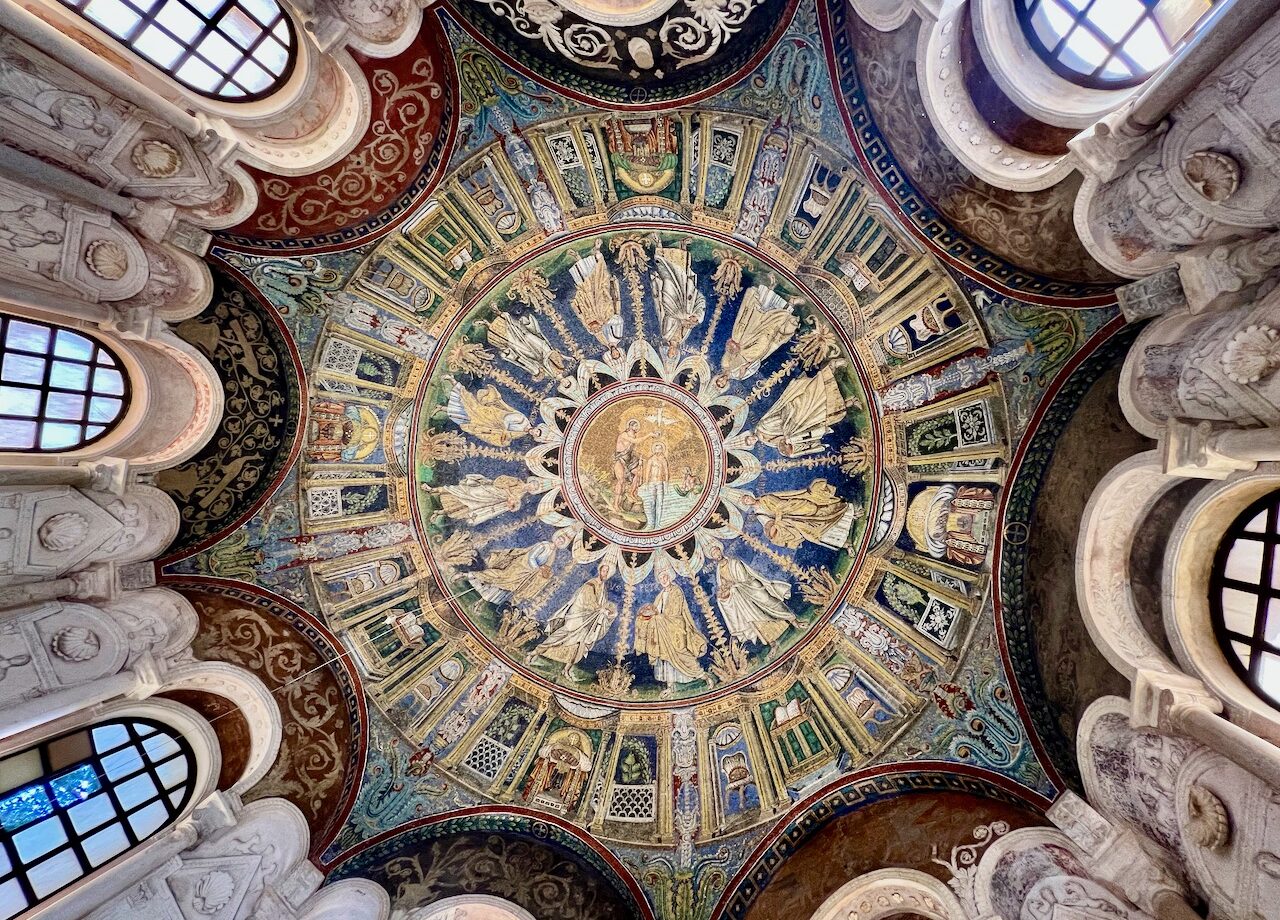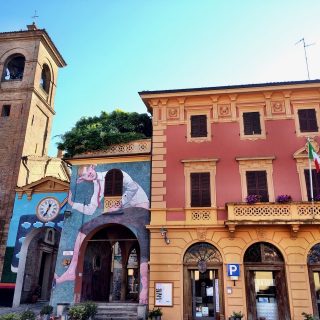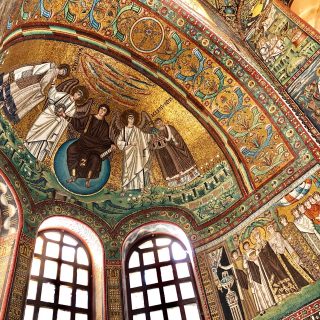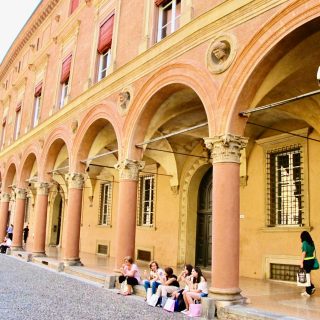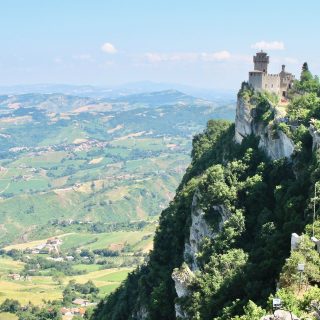The city of Ravenna, nestled in the eastern edges of the Emilia-Romagna region of Italy, is a treasure trove of history and culture. Renowned for its stunning collection of mosaics and its significance as the capital of the Western Roman Empire in the 5th and 6th centuries AD, Ravenna boasts no less than 8 UNESCO World Heritage monuments, grouped together as the Early Christian Monuments of Ravenna. Though I’ve seen them numerous times, the ancient monuments of Ravenna, with their mesmerising mosaics, never fail to amaze. The artistic skill with which these monuments and their mosaics were created is simply unparalleled! Read on to learn more about these 8 historic attractions in Ravenna:
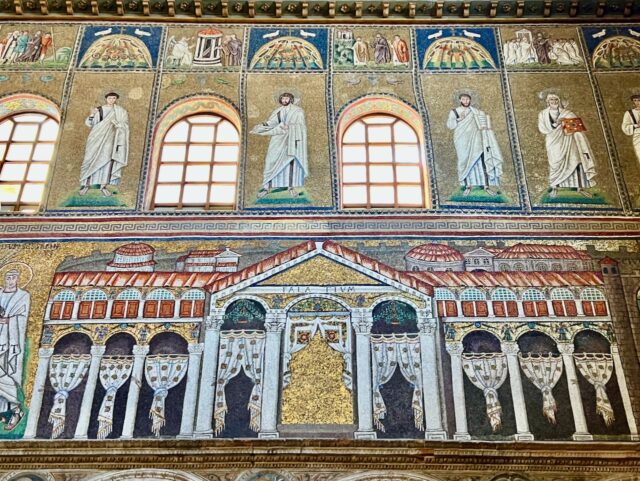

UNESCO World Heritage monuments in Ravenna
The 8 UNESCO World Heritage monuments in Ravenna are:
- Basilica of San Vitale
- and the adjacent Mausoleum of Galla Placidia;
- Neonian Baptistery;
- Basilica of Sant’Apollinare Nuovo;
- Arian Baptistery;
- Archiepiscopal Chapel;
- Mausoleum of Theodoric;
- and the Basilica of Sant’Apollinare in Classe (located about a 15-minute drive outside the city).
These monuments were all constructed in the 5th and 6th centuries AD and have left an indelible mark on the city’s cultural heritage, making Ravenna one of the most fascinating places to visit in Emilia-Romagna. Ravenna is also one of the 11 Art Cities of Emilia-Romagna.
The Mosaics of Ravenna: A Glimpse into Antiquity
The most iconic features of Ravenna’s UNESCO World Heritage monuments are its dazzling mosaics. These intricate pieces of art are not just decorations, but rather windows into different eras, cultures and artistic expressions. These ancient mosaics narrate stories of early Christianity and provide insights into the opulence and artistic prowess of the time.
How to visit Ravenna’s UNESCO World Heritage monuments
It’s possible to visit all 8 monuments in a day but I strongly recommend spending more time in the city to truly appreciate their beauty and craftsmanship. Besides, there are many things to do in Ravenna which will keep visitors occupied for at least a few days. Aside from the Mausoleum of Theodoric and the Basilica of Sant’Apollinare in Classe, the monuments are within easy walking distance of each other. Visitors can purchase a combo ticket for 3 or 5 of the most important monuments in the city centre. Alternatively, I suggest joining a guided walking tour of these UNESCO sites.
1. Basilica di San Vitale
Arguably the most impressive of Ravenna’s UNESCO World Heritage monuments, the Basilica di San Vitale is a prime example of Byzantine architecture and boasts some of the most stunning mosaics in Ravenna.
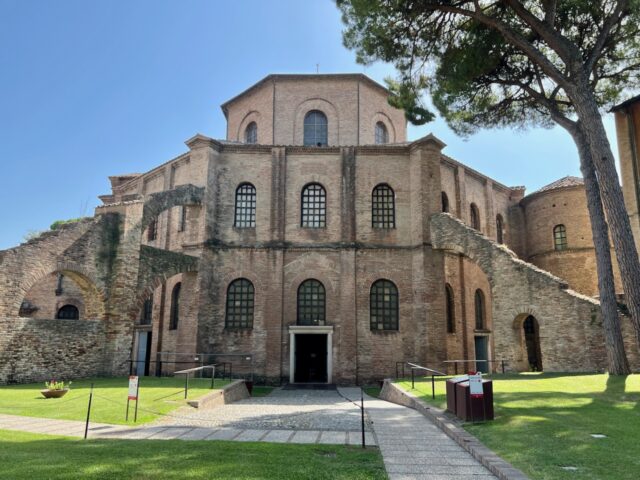
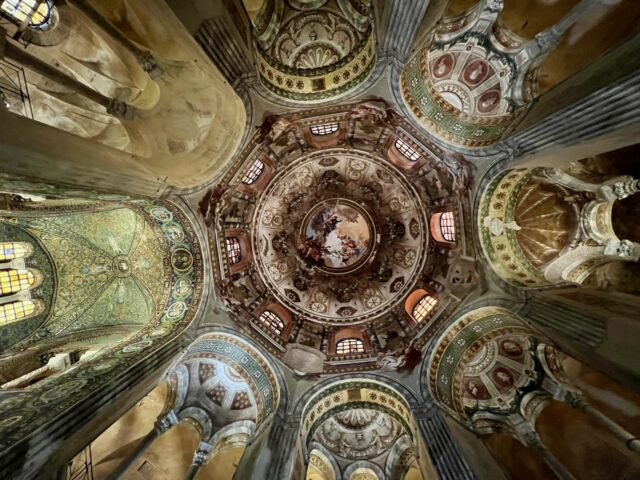
Built in the 6th century AD, these mosaics narrate biblical stories and depict portraits of the imperial couple, Emperor Justinian I and Empress Theodora. The shimmering tesserae used in these mosaics create a sense of depth and luminosity.
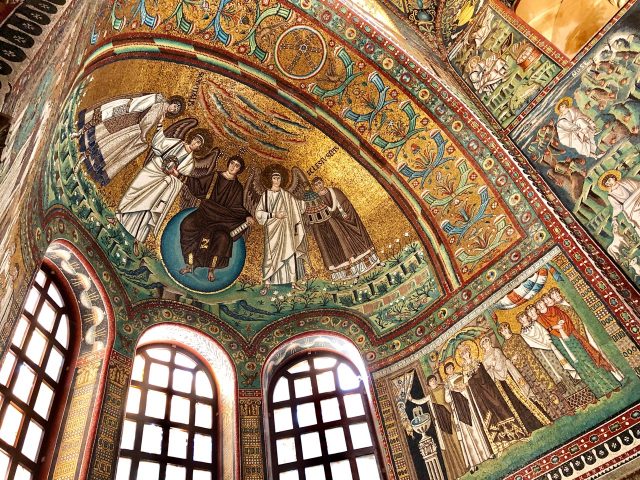
I recommend spending a bit more time (and zooming in with your camera) at the panel featuring Empress Theodora and her maidens. The level of detail in the luxurious garments is simply astonishing.
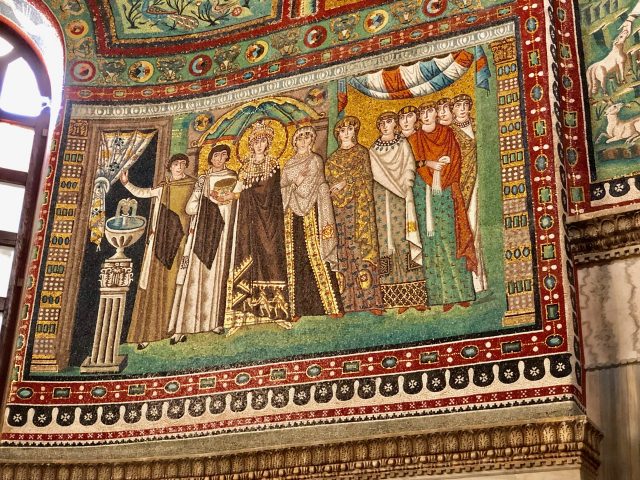
2. Mausoleum of Galla Placidia
Equally mesmerising are the mosaics of the Mausoleum of Galla Placidia, known for their rich symbolism and intricate designs. The Mausoleum, situated adjacent to the Basilica di San Vitale, is a humble-looking structure but an enchanting world awaits as you step inside.
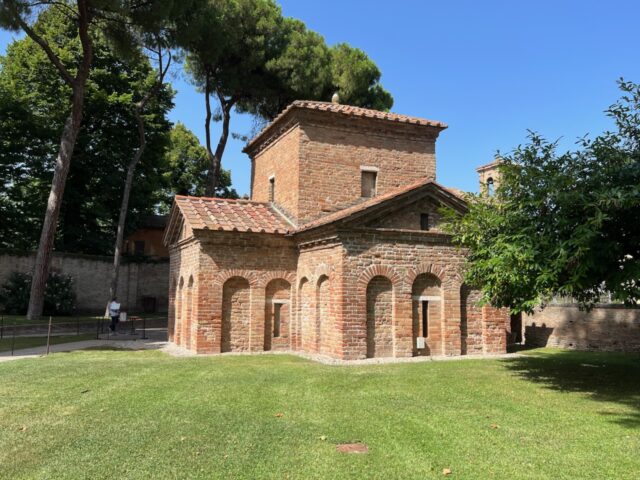
The mosaics, which date back to the 5th century AD, form a celestial vault that envelops visitors in a tapestry of stars, crosses and geometric patterns. This fusion of art and spirituality is a testament to Ravenna’s historical role as a centre of Christian worship and art.
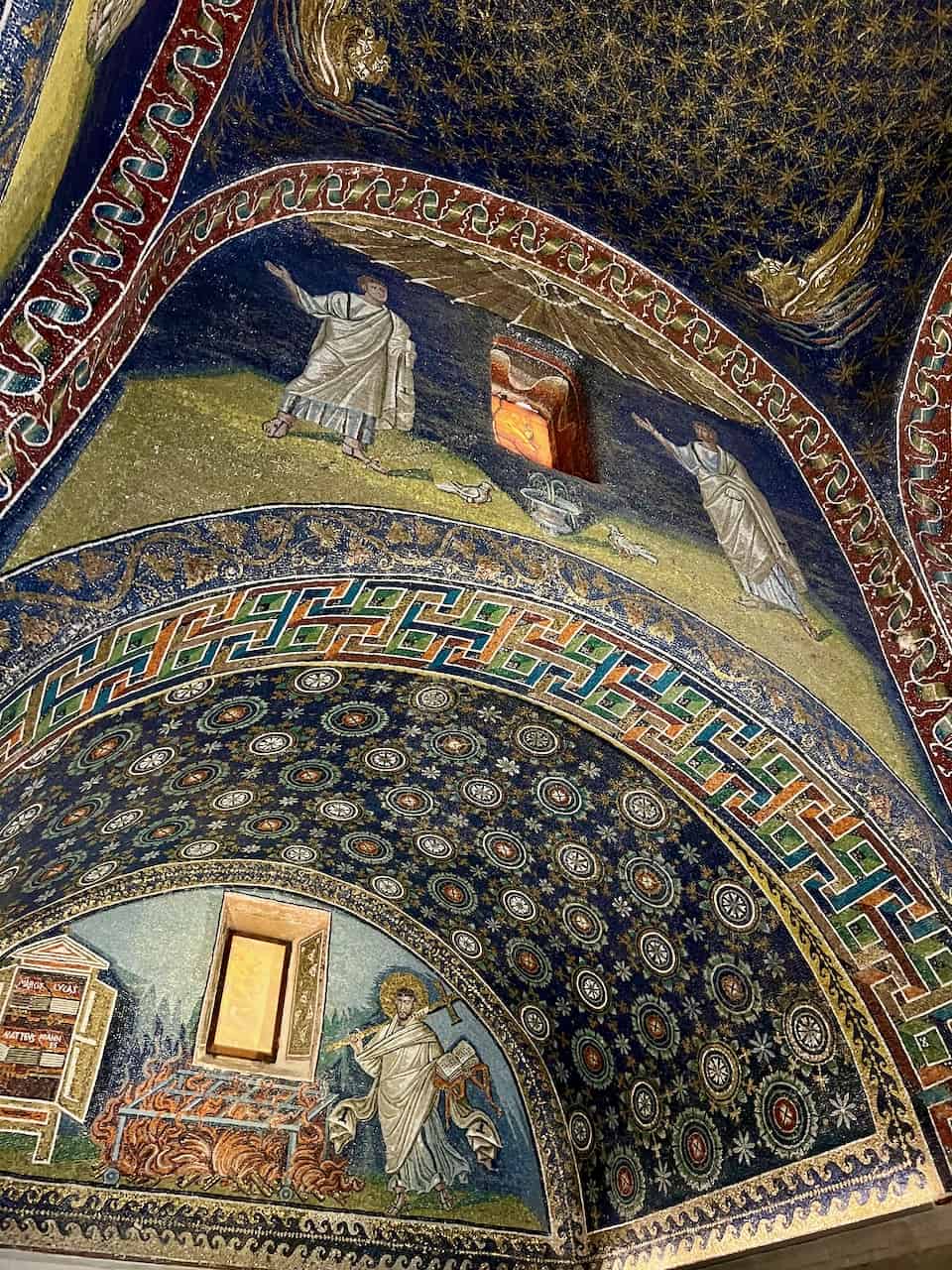
3. Baptistery of Neon
Ravenna’s Baptistery of Neon is a marvel of architectural precision and artistic expression. This 5th century octagonal structure is, according to UNESCO, “the finest and most complete surviving example of an early-Christian baptistry”.
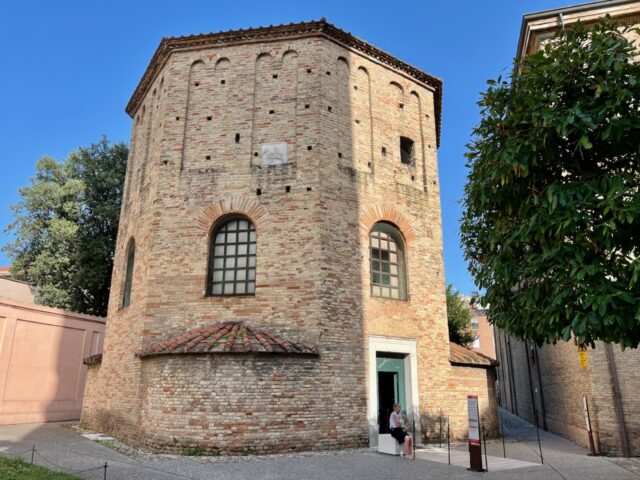
Its interior is adorned with magnificent mosaics that depict scenes of the Baptism of Christ by John the Baptist. Its ceiling is simply magnificent and draws many gasps as visitors enter the baptistery.
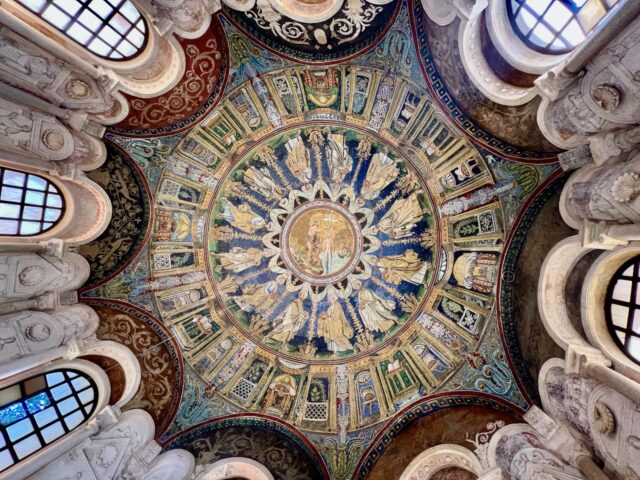
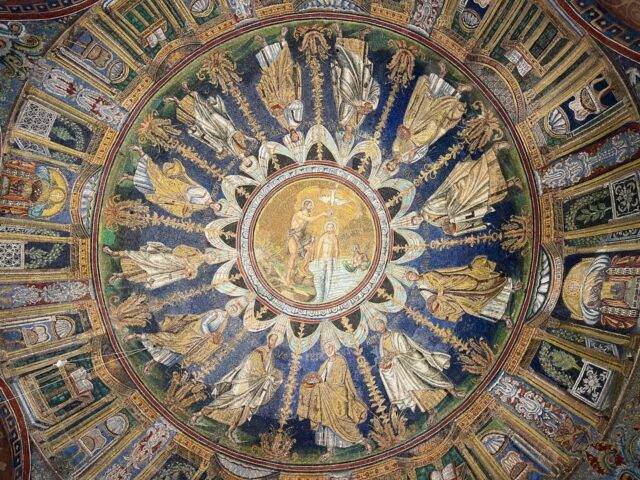
4. Archbishop’s Chapel
The Archbishop’s Chapel (or Chapel of St. Andrew) is the only private oratory from the Early Christian period (dating from the 6th century AD) that has survived to this day. The smallest of the mosaic sites in Ravenna, the chapel is located inside the Bishop’s Palace next door to the Neonian Baptistery.
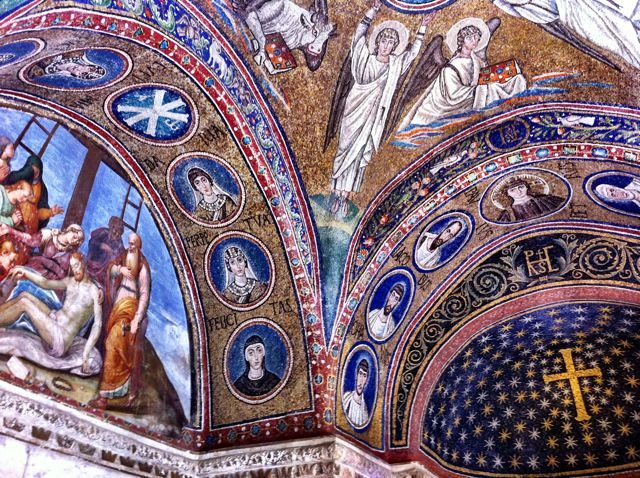
5. Basilica di Sant’Apollinare Nuovo
The Basilica di Sant’Apollinare Nuovo stands as a testament to the rich history and artistic legacy of Ravenna. This UNESCO World Heritage site, erected in the 6th century AD under the rule of Theodoric the Great, showcases a harmonious blend of architectural influences, whilst the mosaics are a tantalising mix of Roman and Byzantine styles.
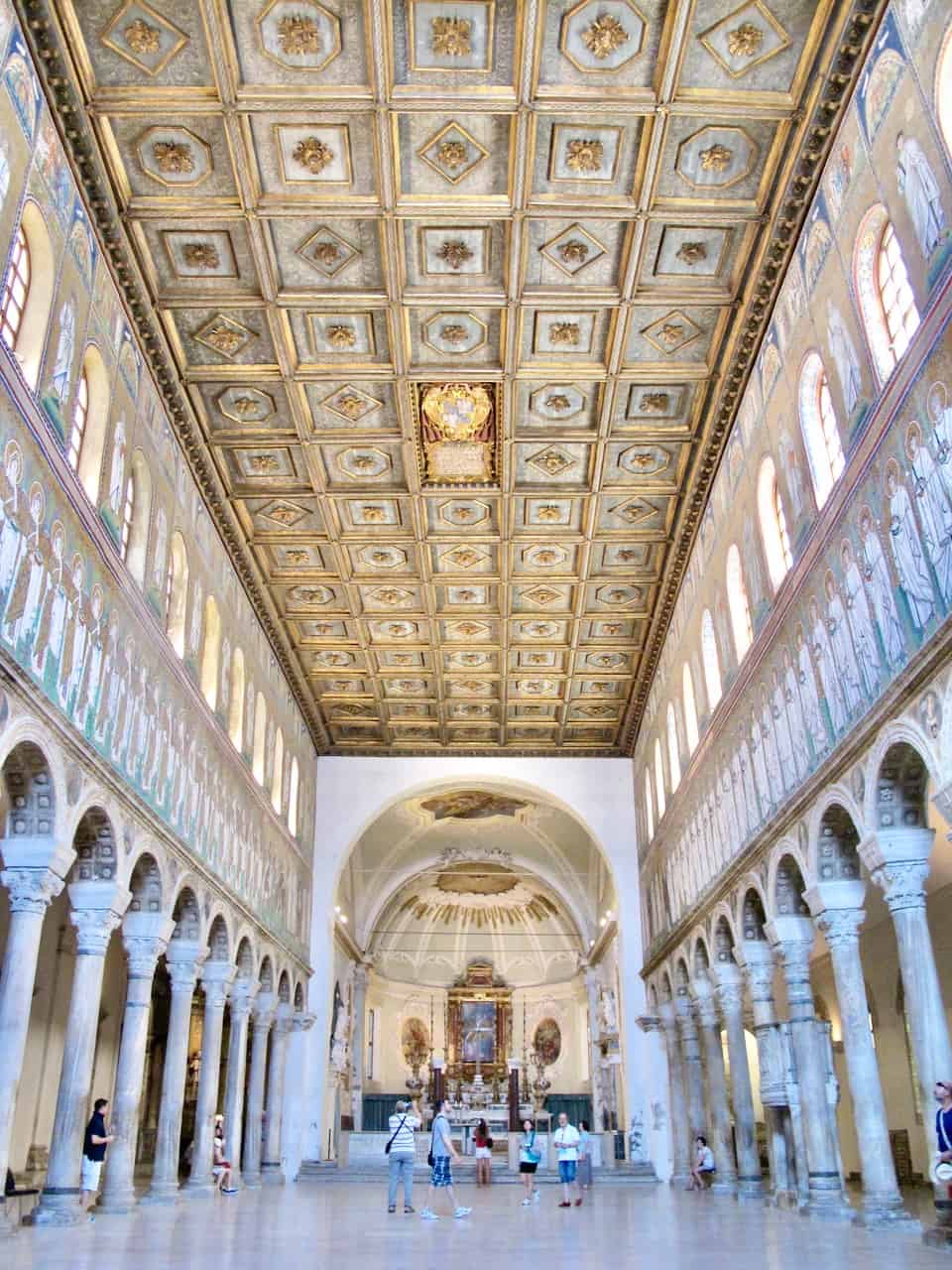
The basilica’s most striking feature is its mesmerising mosaics, which adorn the entire length of its nave walls. These intricate mosaics depict scenes from the life of Christ, as well as a procession of 22 virgins and martyrs led by Saint Apollinaris. The level of detail is simply staggering!
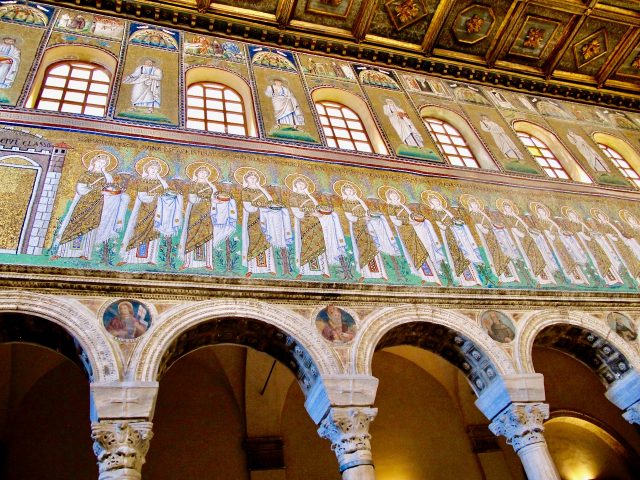
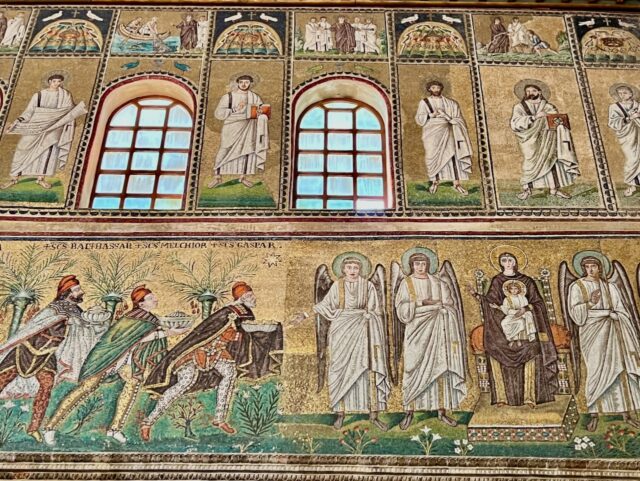
The delicate colour palette and meticulous craftsmanship of the mosaics truly evoke a sense of awe. I recommend spending a bit more time here, preferably with a guide who can point out the numerous intriguing scenes rich with symbolism and narratives of the period.
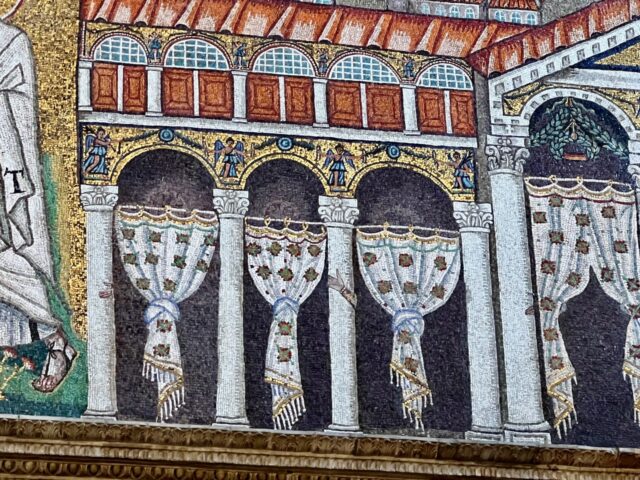
If you’re short on time and have to choose which UNESCO World Heritage sites in Ravenna to visit, then I recommend choosing the top-5 monuments described above.
6. Arian Baptistery
Ravenna’s UNESCO World Heritage monuments also include early Christian buildings that reflect the city’s role as a crossroads of cultures and faiths. The 5th century AD Arian Baptistery, dedicated to the Arian branch of Christianity, showcases a unique blend of artistic styles. The dome inside the baptistery depicts the baptism of Christ. Compared to the rich Orthodox style of the Neonian Baptistery (see above), these mosaics appear more subdued.
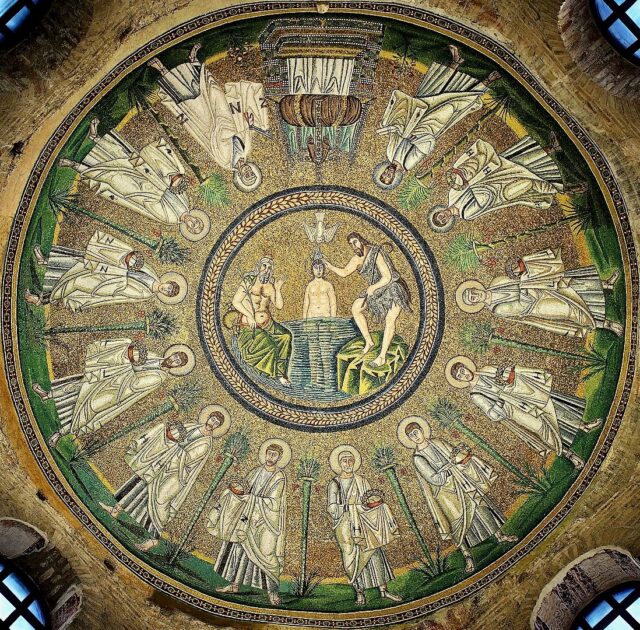
7. Mausoleum of Theodoric
The UNESCO-listed Mausoleum of Theodoric stands as a testament to the power and influence of the Ostrogothic ruler Theodoric the Great. Built in the 6th century, this circular mausoleum is a fusion of Roman and Gothic architectural styles, and is the only surviving example of a king’s tomb from this period. Its massive stone construction reflects Theodoric’s ambition to leave a lasting legacy.
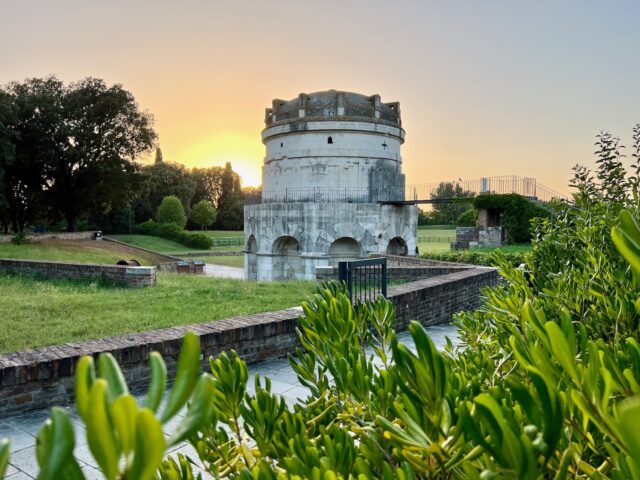
Inside the mausoleum, the central chamber houses the stone sarcophagus of Theodoric (though his remains were removed during the Byzantine period). While the mausoleum, located outside the city centre, lacks the vibrant mosaics of other Ravenna monuments, its architectural significance and historical context make it an integral part of the city’s UNESCO ensemble.
8. Basilica di Sant’Apollinare in Classe
The Basilica di Sant’Apollinare in Classe, a 15-minute drive from Ravenna, is an exceptional UNESCO World Heritage site. The basilica was constructed in the 6th century AD and exemplifies the Byzantine architectural style.
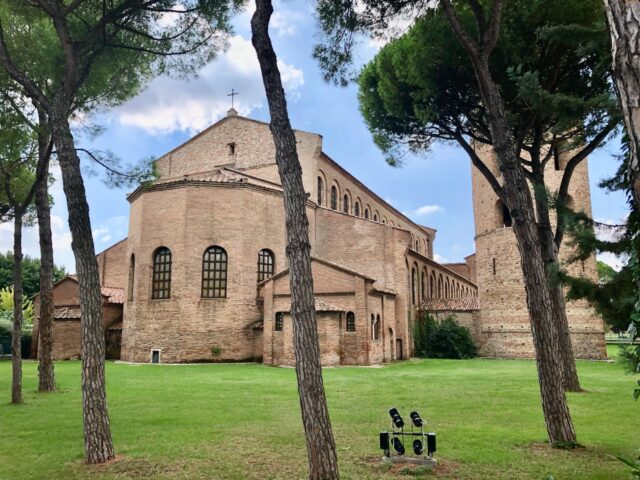
The basilica’s nave is lined by 24 columns of Italian marble. The apse features a richly decorated mosaic with the figure of Saint Apollinaris in the middle. The mosaics in Basilica di Sant’Apollinare in Classe are characterised by their use of gold backgrounds and vibrant hues, creating a striking visual experience.
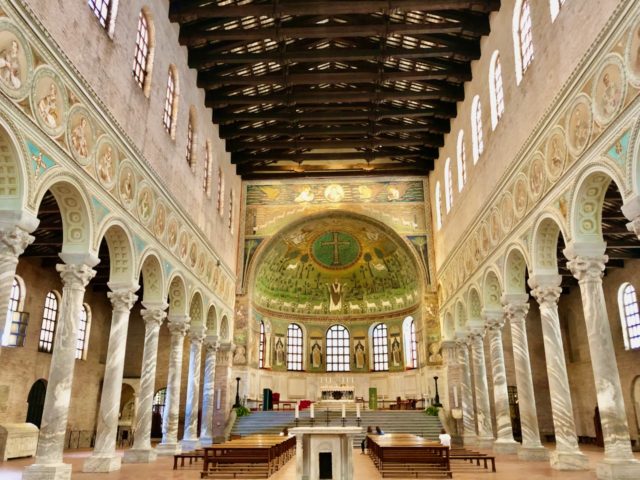
A Living Legacy: Ravenna’s Enduring Influence
Ravenna’s UNESCO World Heritage monuments are more than just relics of the past; they are a living legacy that continues to inspire artists, historians and visitors from around the world. The intricate mosaics, awe-inspiring architecture, and historical significance of these sites paint a vivid picture of Ravenna’s role as a cultural crossroads and a testament to human craftsmanship. To learn more about how these ancient mosaics continue to inspire in our present day, I recommend a visit to Museo Arte della Citta (City Art Gallery) or MAR. This art gallery houses a stunning collection of contemporary mosaics.
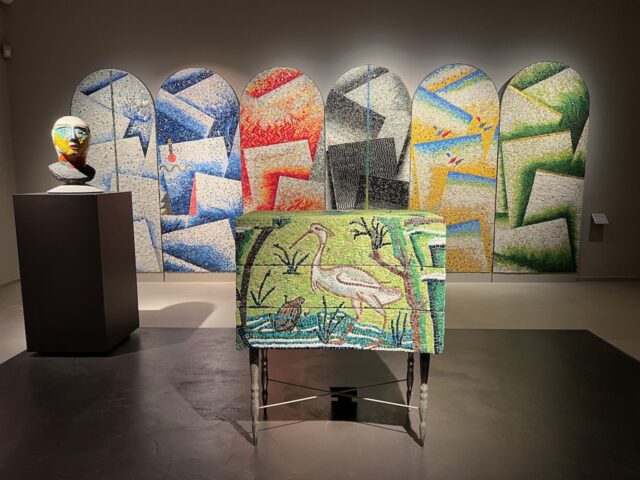
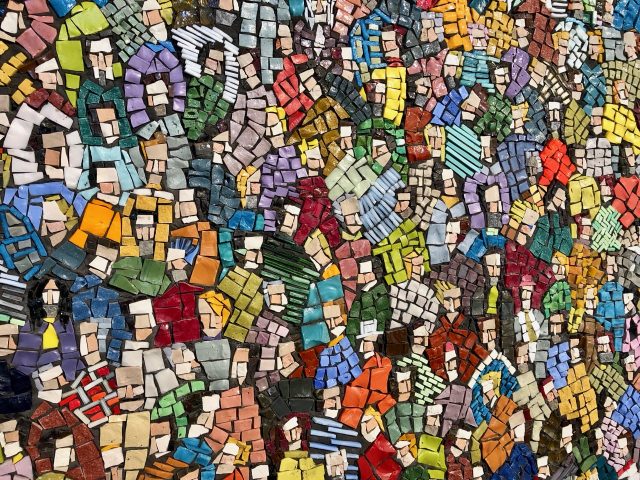
In order to truly appreciate the fine art of creating mosaics, I suggest participating in a mosaic workshop. One gallery/workshop I can recommend is Koko Mosaico (Via di Roma, 136).
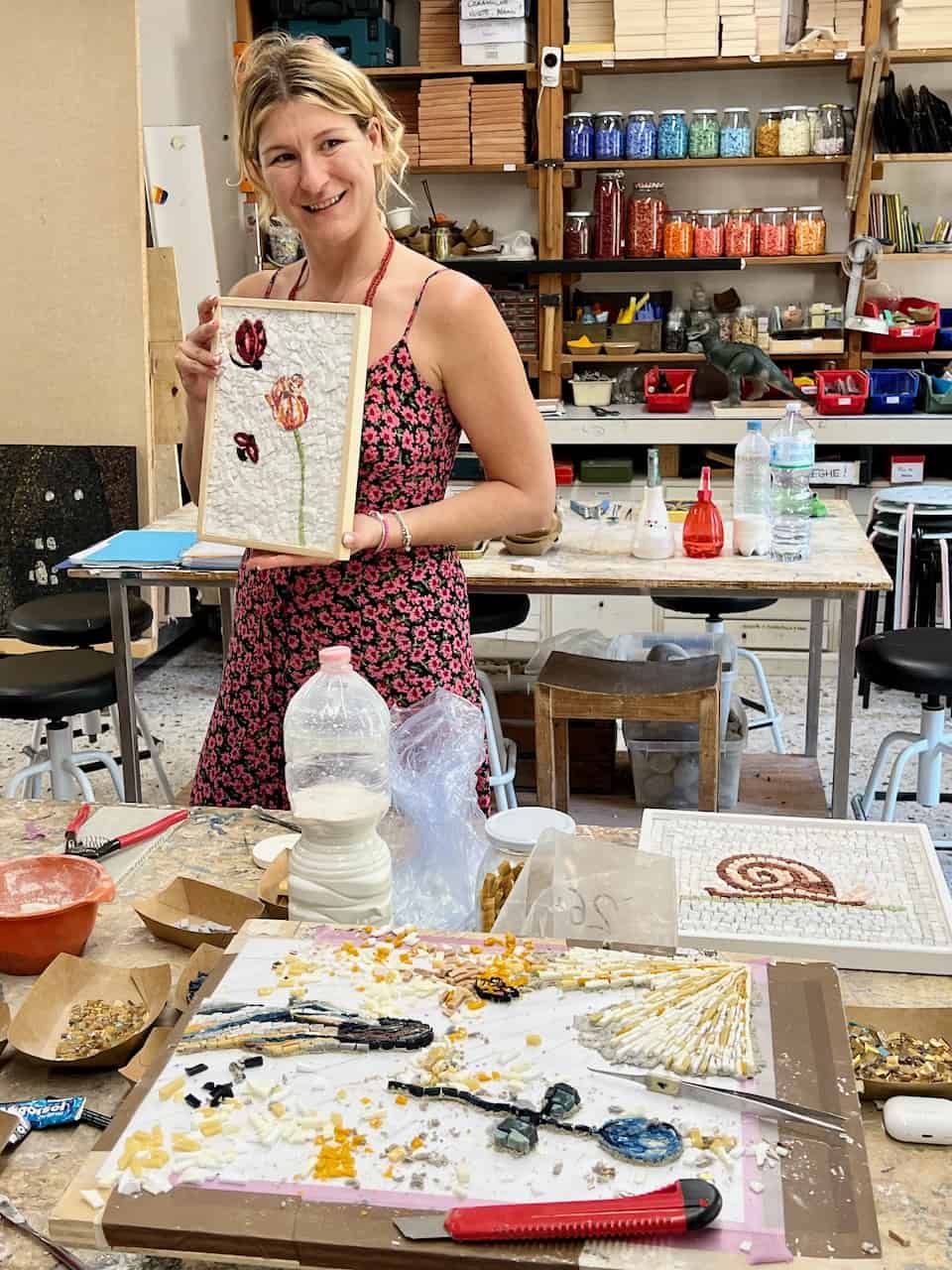
Note: my trip to Ravenna was a collaboration between iambassador and Ravenna Tourism. As always, all views mentioned above are mine, and mine only.

